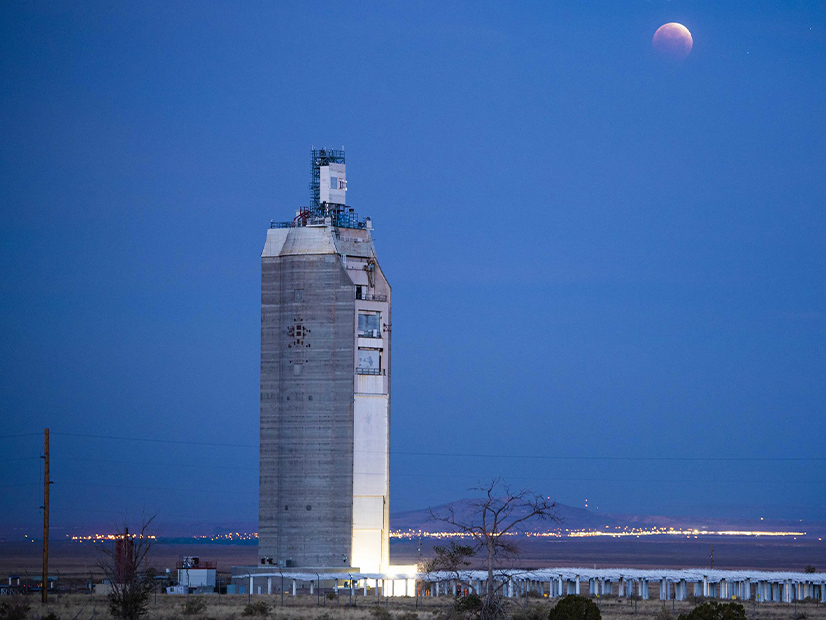
The U.S. Department of Energy on Tuesday announced $24 million in grants to support the development of next-generation concentrating solar-thermal power (CSP) technology, which generates heat for electricity production and industrial processing.
The awards were announced at the International Energy Agency’s Solar Power and Chemical Energy Systems conference, hosted by DOE in Albuquerque, N.M.
Five of the 10 grants focus on industrial uses, furthering the Industrial Heat Shot initiative that DOE laid out earlier this month with a goal of reducing greenhouse gas emissions from manufacturing operations by 85%, and its roadmap toward decarbonization of the industrial sector. (See DOE Roadmap Tackles Tough Industrial Carbon Emissions.)
Those projects are:
- demonstrate a CSP process for decarbonizing the heating of limestone to 950 degrees Celsius, which could reduce the carbon emissions associated with manufacturing cement (Heliogen, Pasadena, Calif., $4.1 million);
- optimize heat-transfer processes and designs associated with the production of solar-thermal production of cement (Sandia National Laboratories, Albuquerque, N.M., $2.6 million);
- develop and test designs of novel molten salt thermal energy storage tanks to enable on-demand delivery of carbon-free heat (Solar Dynamics, Broomfield, Colo., $2.3 million);
- design and validate a highly efficient and scalable solar thermochemical reactor to produce hydrogen from water and sunlight (University of Florida, $2.2 million); and
- develop a novel chemical reactor to decarbonize the production of propylene, a key precursor to many chemicals (University of Maryland College Park, $2 million).
The other five grants support Gen3 solid particle technology research projects:
- deliver a preliminary design of a supercritical carbon-dioxide (sCO2) power block that is optimized for Gen3 CSP that uses solid particles (GE Research, Niskayuna, N.Y., $1.6 million);
- develop a novel particle-based thermochemical energy storage system for CSP (Mississippi State University, $3.1 million);
- design high-temperature mass flow sensors that use solid particles to move and store thermal energy for the reliable operation of Gen3 CSP systems (Sandia, $1 million);
- design a modular slide gate system for control of particle flows in CSP receivers, in collaboration with an industrial valve manufacturer (Sandia, $1.9 million); and
- develop a prototype particle-to-sCO2 heat exchanger using advanced design and manufacturing techniques (University of Wisconsin-Madison, $3.1 million).
In a news release, Energy Secretary Jennifer Granholm said: “Solar-thermal technologies provide us with a significant opportunity to upgrade and reduce emissions of industrial plants across the nation while meeting America’s energy needs with reliable, around-the-clock power generation. DOE’s investments will drive the innovation necessary to build out a clean energy economy and meet our climate goals while diversifying the sources of dependable and readily available clean energy.”
Also Tuesday, DOE announced a roadmap developed by its National Renewable Energy Laboratory (NREL) to guide research and development into heliostats, the mirrors that follow the sun and concentrate sunlight onto receivers to create CSP.
Heliostats now represent 30 to 40% of the cost of a CSP system, and reducing their price tag is important to DOE’s goal of inexpensive CSP plants.
Heliocon — DOE’s Heliostat Consortium, a five-year, $25 million effort led by NREL, Sandia and the Australian Solar Thermal Research Institute — will work to implement the new heliostat roadmap. NREL on Tuesday issued a $3 million request for proposals to expand U.S. expertise in heliostats and increase the number of researchers working in the field.



